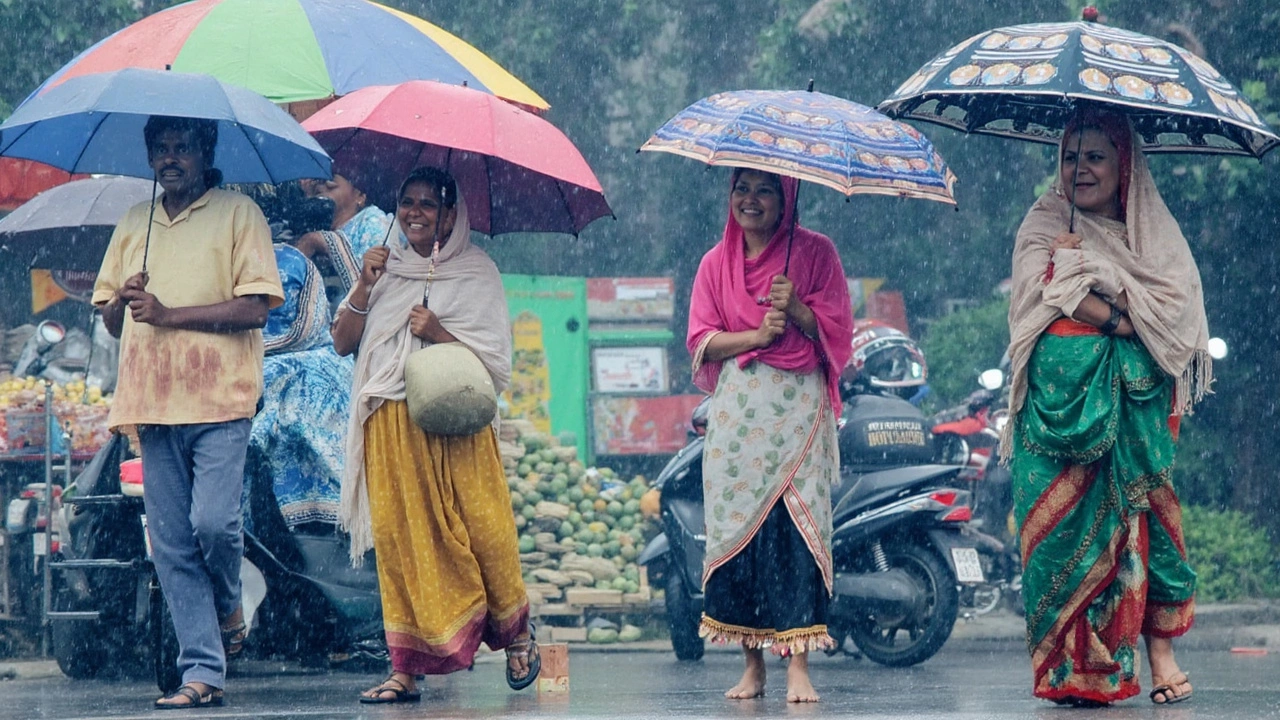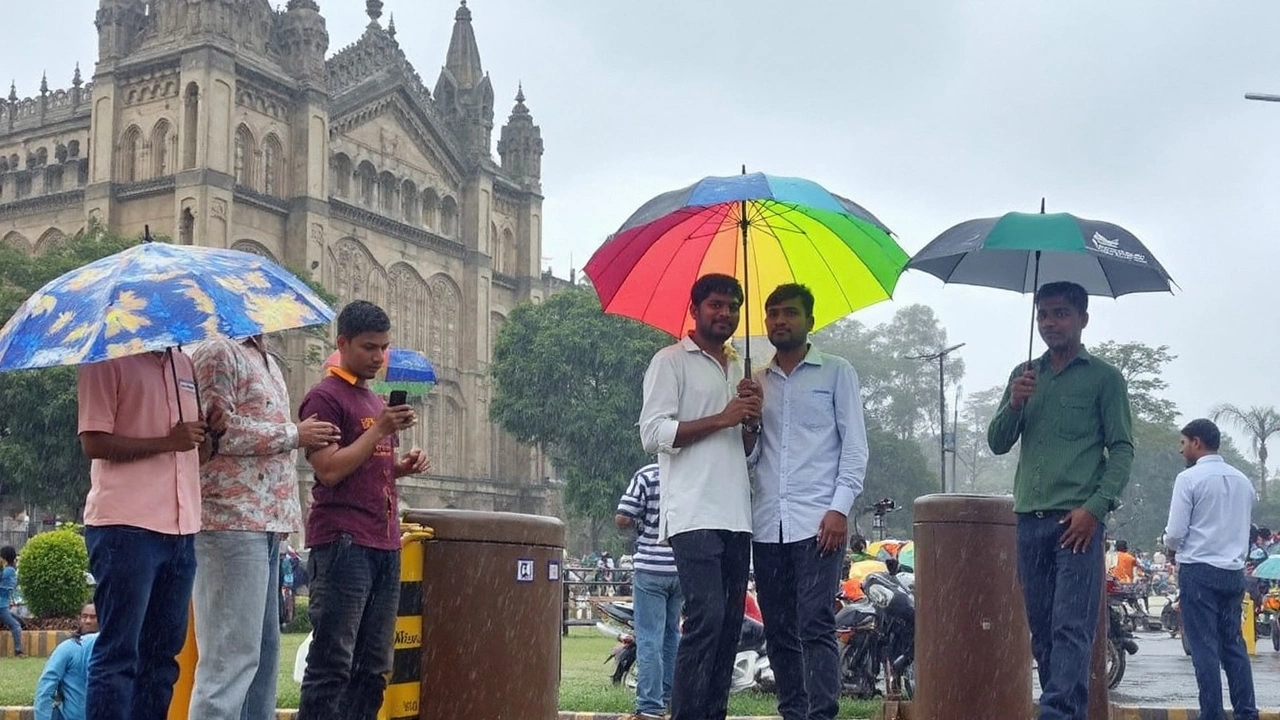
Monsoon Arrives in Uttar Pradesh: Relief from Heat, But With Warnings
After days of waiting, Uttar Pradesh finally welcomed the monsoon on June 18. This year, the rains hit on schedule, pushing back against earlier worries about delays. Within hours, towns like Sonbhadra, Ballia, Mau, Ghazipur, Jhansi, and Lalitpur felt the first real coolness after a punishing heatwave. Roads quickly turned damp, markets saw a rush of people, and locals pulled out their umbrellas and raincoats. Monsoon isn't just weather here—it's a major event for everyone from farmers to street vendors.
The Indian Meteorological Department (IMD) confirmed that rainfall levels reached 'moderate' in several pockets, immediately breaking the relentless heat that had been gripping much of eastern and southern Uttar Pradesh. Weather experts said this was just the beginning, with conditions rapidly improving for the monsoon's march into even more districts.

Orange Alerts and Thunderstorm Dangers: What’s Next?
But the arrival of monsoon didn't come quietly. The IMD sounded the alarm almost as soon as the first showers hit, flagging 39 districts under an orange alert. They’re not just warning about steady rains—forecasters expect localized deluges, particularly driven by a stubborn low-pressure area over Gangetic West Bengal coupled with a western disturbance.
- West UP: Very heavy rainfall expected on June 19. Residents in districts like Meerut, Agra, and Aligarh should be bracing for waterlogged streets and possible traffic jams.
- East UP: The downpour will shift east, with June 20 and 21 shaping up to be drenched. Cities along the Ganges corridor, such as Varanasi, Prayagraj, and Gorakhpur, can expect not just heavy rain but loud, frequent thunderstorms.
Lightning is a big worry right now. Atul Kumar Singh, a seasoned IMD scientist, stressed that with these intense rain systems, thunderstorm frequency and lightning strikes are set to rise. Older, weakened buildings may be at risk. Authorities have urged people to stay indoors during intense storms, avoid standing under large trees, and stay away from open fields if lightning begins.
In the past few years, lightning has been a notorious cause of accidental deaths in the region, especially among farmers caught outside. Local governments are reminding people to use mobile alerts and radio broadcasts to keep tabs on approaching storms.
Beyond these orange alerts, the IMD mentioned that heavy spells could trigger flash floods in low-lying areas, overflow open drains, and disturb rural life. School buildings in some districts have cancelled outdoor activities, while district disaster teams are on high alert. Drainage clearing and relief camps are being organized in anticipation.
The monsoon isn't stopping at the UP border—it's on track to swipe through the rest of the state by June 30. After that, it's Punjab, Haryana, and the rest of North India in its sights.